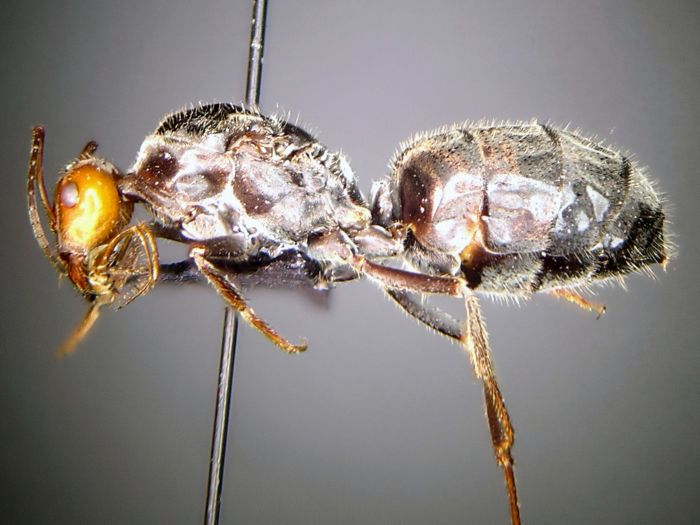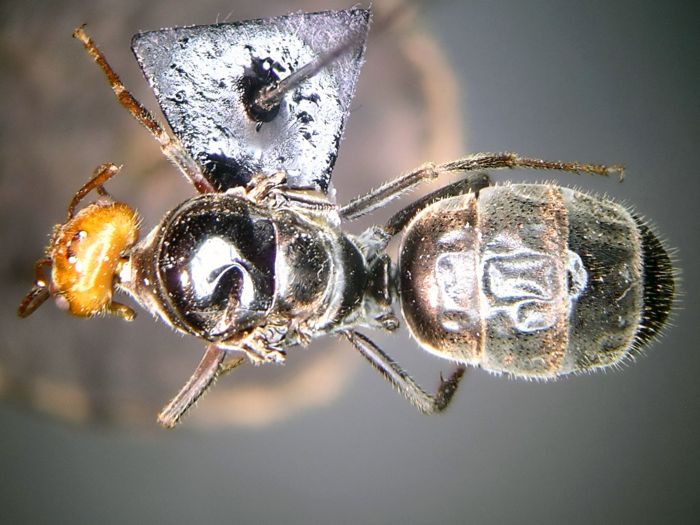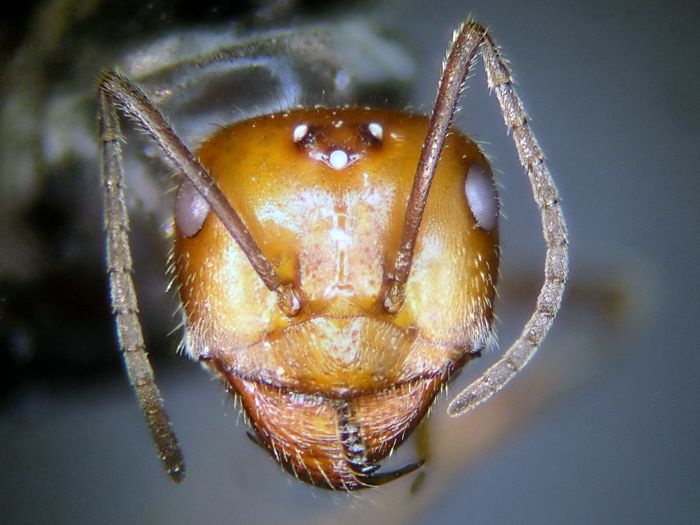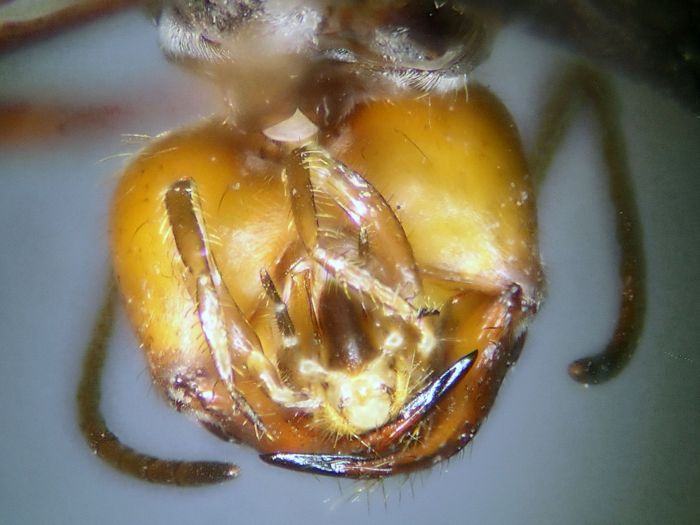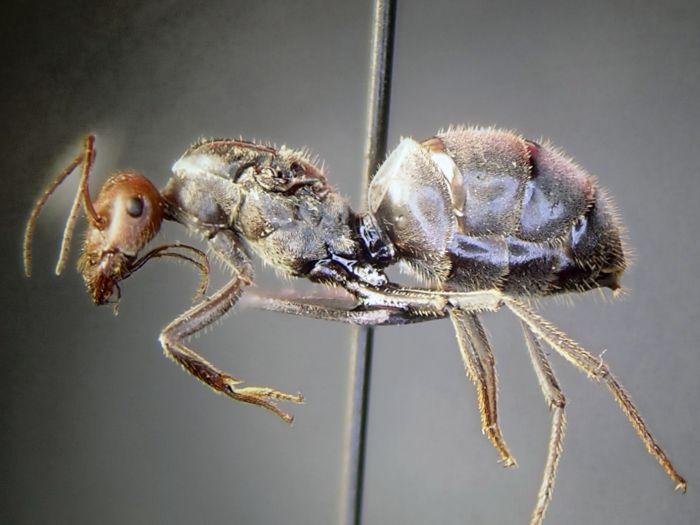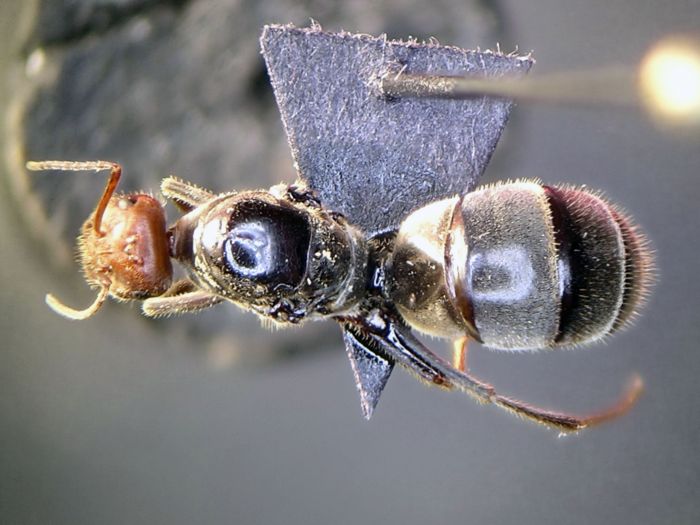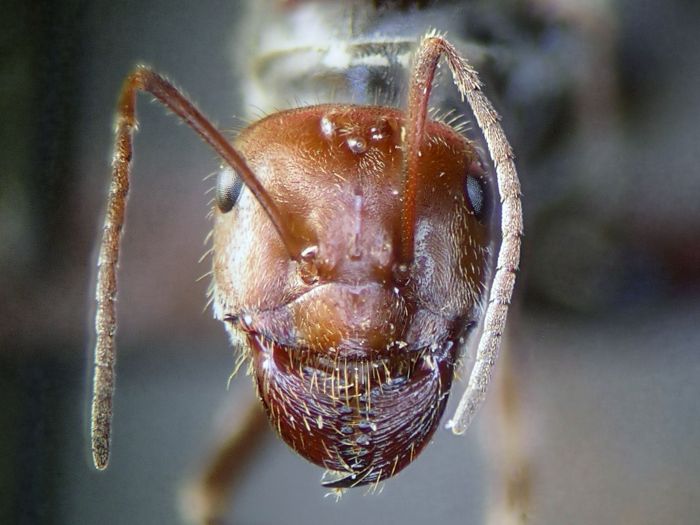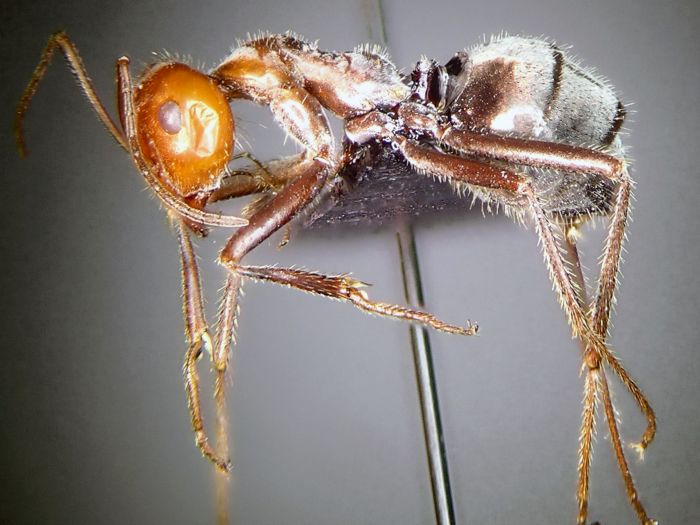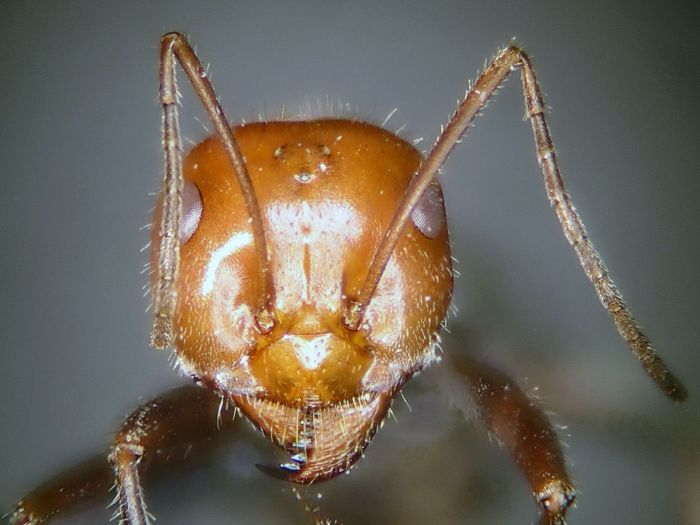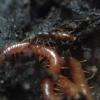Edit: I think this actually could be M. mendax after all. I read part of the key wrong. Also MOD appears to have two definitions.
Well, for the M. mendax worker, the key says "Longest hairs on pronotal dorsum and disc of second tergum at least 0.6 x MOD, usually about 0.75 x MOD; head of major with margins, in frontal view, nearly parallel".
Took me a while to figure this out a while back, but so everybody knows, MOD is Maximum Ocular Diameter, pretty much the same as EL - Eye Length. Correct me if I'm wrong.
Not sure about my specimen's head shape, but the shortness of its hairs again--this time the worker and not just the queen.
As for the queen, to get to M. mendax the key says "Parapsis with punctures usually of two sizes and variably spaced, never uniformly dense; malar area usually with few or no standing hairs; HW usually less than 1.9 mm". "Parapsis closely, uniformly punctate; malar area with abundant standing hairs; HW usually in excess of 2.0 mm"
Not sure about the standing hairs on the malar area, without experience I don't exactly know for sure which of those would be considered standing, but it looked like quite a few to me.
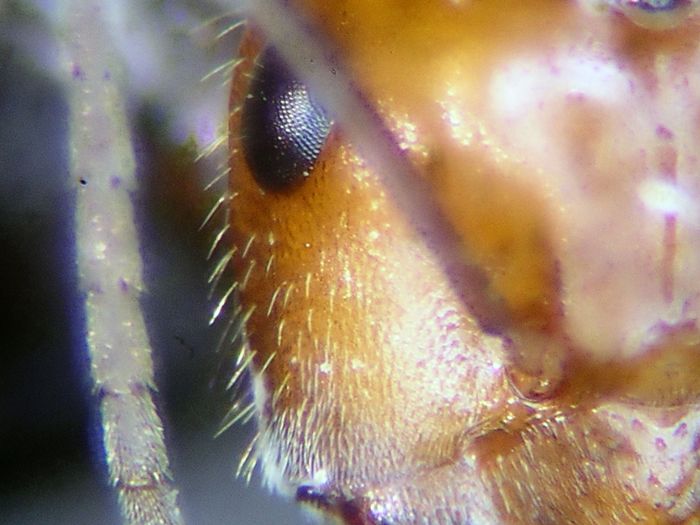
Then there is the head width, and the head width of this major is over 2 mm.
Edit: Fixed a mistake I made.
